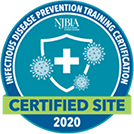We’re used to seeing native advertising: you click on an article and start reading, only to realize halfway through (or perhaps you noticed a subtle disclaimer) that the article is actually an advertisement for a product or service. As more and more associations are seeking ways to expand opportunities for sponsors to engage their members, it’s imperative to follow the FTC’s guidelines for sponsored content and messaging in all of your association’s communications.

Let’s Be Clear
Last month, the Federal Trade Commission (FTC) published a statement clarifying its policy on native advertising – that is, advertising that appears identical to non-paid editorial content. The FTC defines native advertising as “content that bears a similarity to the news, feature articles, product reviews, entertainment and other material that surrounds it online.”
Native advertisements have become a popular tool on web pages and social media because of users’ abilities to filter out advertising messaging. Organizations have “increasingly come to rely on native advertising as a source of revenue as audiences continue to adopt ad-blocking and other behaviors aimed at achieving an ad-limited experience,” writes Greg Dool of Foliomag.com.
The issue with native advertisements, according to the FTC, is they’re misleading. “A publisher, or an authorized third party, can easily and inexpensively format an ad so it matches the style and layout of the content into which it is integrated,” the document states. “The effect is to mask the signals consumers customarily have relied upon to recognize an advertising or promotional message.” Because the ads aren’t distinguishable from actual content on a website, visitors may click on advertising content they would otherwise avoid – the effect being it drives up revenue for publishers.
As an association, it is paramount to remain compliant in our communications, especially if our communications involve messaging from sponsors. Sponsored messages that can be considered deceptive by the FTC may compromise your marketing campaigns. The key for compliance is transparency. If your message is promotional or commercial in nature, just say so by issuing a clear and prominent disclosure, such as “Ad” or “Advertisement.”
The FTC has produced a document that gives a full explanation on disclosures for review, but they try to eliminate advertising deception. That means no ads that feature ambiguous language, sped up audio or hard-to-read fonts, among others. Staying in compliance with the FTC will keep the credibility and integrity of your association’s communications intact.




